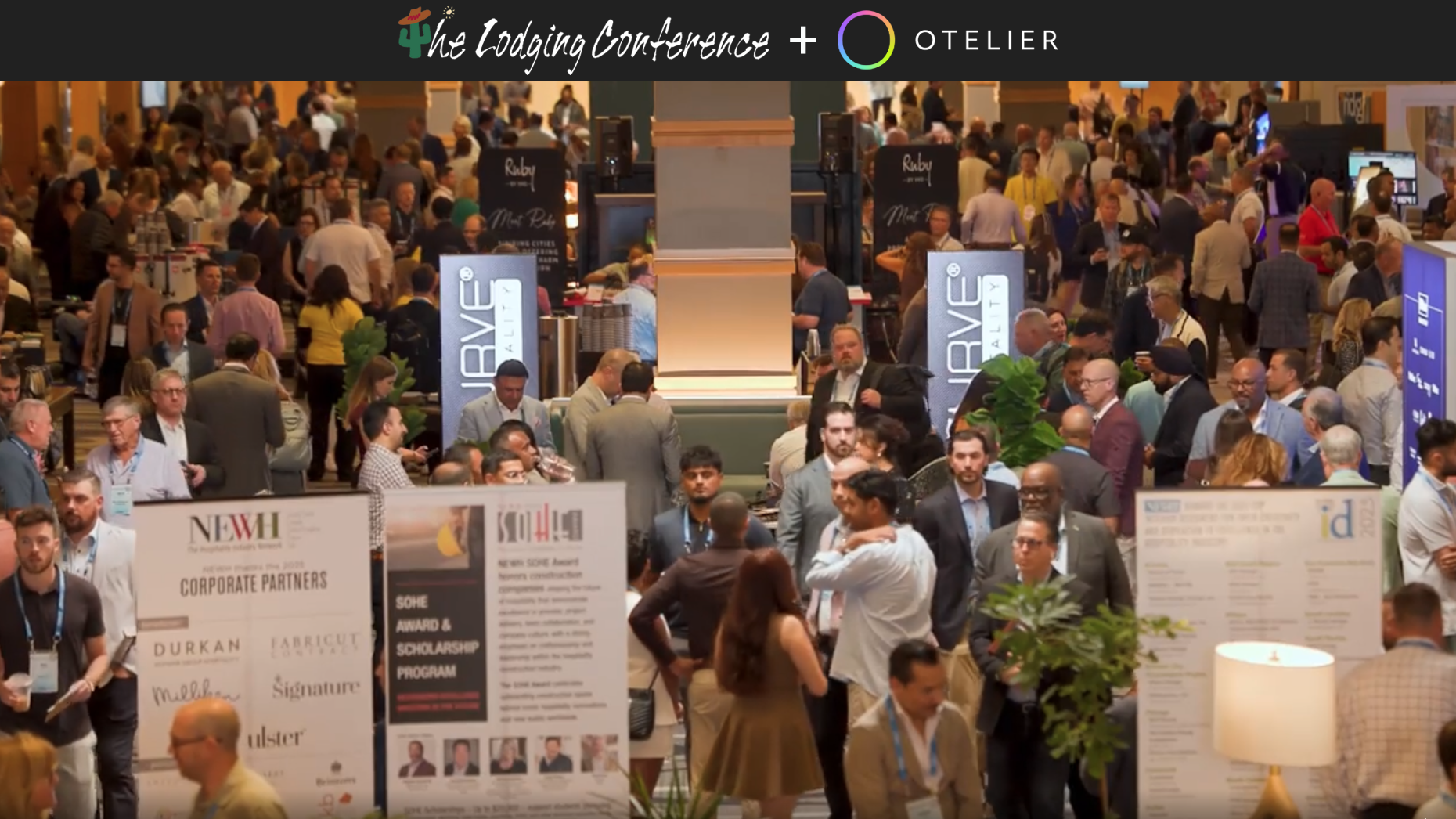Celebrating its 30th year, The Lodging Conference returned to the JW Marriott Phoenix Desert Ridge with a full house and a tone of “cautious optimism.” Executives acknowledged a bifurcated recovery and persistent cost pressures, yet focused on practical paths to profitability – leaner operations, smarter use of technology (including AI), and sharper, data-led strategies. For Otelier, it was an ideal forum to connect with owners and operators actively seeking operational efficiencies and portfolio-wide visibility to protect margins heading into 2026.
In a recap, HVS characterized the atmosphere as “cautious optimism,” noting flat-to-underwhelming ADR and RevPAR gains versus rising expenses. On stage, panelists repeatedly described a bifurcated recovery: luxury and upper-upscale continue to outperform while midscale and economy feel the squeeze.
Starwood Capital’s Ben Rosenbaum called it a “K-shaped” recovery, and leaders from Outrigger and Marriott echoed resilient luxury demand, even amid tariff pressure and softer international travel. Marriott CFO Leeny Oberg also pointed to shortened booking windows – 40% of U.S. transient stays booked within four days – and flat corporate demand, even as group and retail hold up, according to coverage in Lodging Magazine.
Macro uncertainty framed much of the conversation. In Hotel Management coverage, economist Bernard Baumohl described this as one of the stranger periods in recent U.S. economic history for forecasting, citing tariff volatility, policy shifts, and the way those ripple into consumer behavior. His takeaway: headwinds are real, but consumers are still spending – travel included – leaving hoteliers to navigate ambiguity while preparing for brighter conditions as rate pressures ease.
In Phoenix, brands were front and center – literally. Marriott spotlighted its new outdoors strategy, including a curated Outdoor Collection featuring cabins, boutique stays, and nature-friendly lodging. The pitch: design-forward, accessible “near-nature” options that sit comfortably inside the Marriott ecosystem.
The outdoors collections offer a unique differentiator, but other new brands launched over the past few months don’t. Tech consultant Mark Fancourt questioned whether the market is nearing brand saturation, suggesting new concepts expand choice but risk blurring differentiation. “If the core idea was to push the customer into ambivalence about the actual label on the building – valuing the loyalty program plastic card over unique experience – it’s working,” he writes.

Casual Conference Vibe
Even with a casual dress code, the Lodging Conference has investment-conference energy and brings together C-level executives from many of the top owners, developers and asset managers across the industry. The exhibit hall is well-trafficked, thanks to breakfasts and breaks served among booths, which turned 7 a.m. coffee into impromptu product walk-throughs.
Outside the exhibit hall were big-brand activations and a Disney-length fireworks display to celebrate the conference’s 30th year.
Otelier once again partnered with The Lodging Conference on a sunrise hike and sponsored a hole on the golf course, which led to quality conversations with owners and management leaders. At the booth, we met with customers to discuss in-flight projects, asset managers to discuss their analytical needs, and integrations partners that could help expand the capabilities of the Otelier product suite.
Three themes dominated conversations:
- 1) Portfolio-level visibility – fast. Asset managers and multi-property owners want a single, PMS-driven dashboard that normalizes data across systems and flags variances without waiting for month-end.
- 2) Budgeting for 2026 with more segmentation. Revenue leaders are pushing budgeting tools to go deeper – daily granularity, market update workflows, and segmentation that mirrors how demand actually behaves (channel, rate code, geography, and beyond).
- 3) Automation and interoperability. From income audit to tax checks, teams are chipping away at manual tasks. We saw strong interest in tax-automation partnerships and OTA recovery models that can be embedded into existing workflows.
Dialogue in Phoenix reinforced that the path to stronger NOI in 2026 lies in focusing on actions that are within a hotelier’s control: centralizing data, standardizing reporting across diverse portfolios, and automating back-office work so teams can spend time where it moves the needle.
If 2025 was about absorbing shocks, conversations at The Lodging Conference tell us 2026 will reward operators who prioritize automation and data centralization.
Missed Otelier at The Lodging Conference or want to continue the conversation? Book a meeting here.











